
Overview
This planter requires more time and specialized tools than most DIY projects I’ve shared here at Playvolution HQ, but it’s not complicated. I figured since I was building one for a plant that’d outgrown it’s current home I’d snap some photos and write it up for anyone who wanted one around their playground or yard.
The process is basically to cut the log to height, bore a cavity with some drilling and chiseling, and add some drainage holes.
Supplies
You’ll need:
- A hunk of log. The piece I used is about 10 inches across and 10 inches tall. I recommend a hardwood like oak, maple, elm, poplar, or locust that’s had some time to dry. Avoid freshly cut logs.
- A chainsaw or band saw.
- A Marker.
- A drill press.
- Wood clamps.
- A (sharp) forstner bit and bit extender. I used a 1 1/2 inch diameter bit.
- A hammer.
- A chisel. I used a 1 1/4 inch wide chisel.
- A hand drill with a 1/2 inch wood bit.
- Sandpaper.

Set The Height
The first step is to use a chainsaw or band saw to cut the log to the desired height and make sure the top and bottom surfaces are flat and parallel to each other. This is important–you don’t want the log rocking on the drill press table.
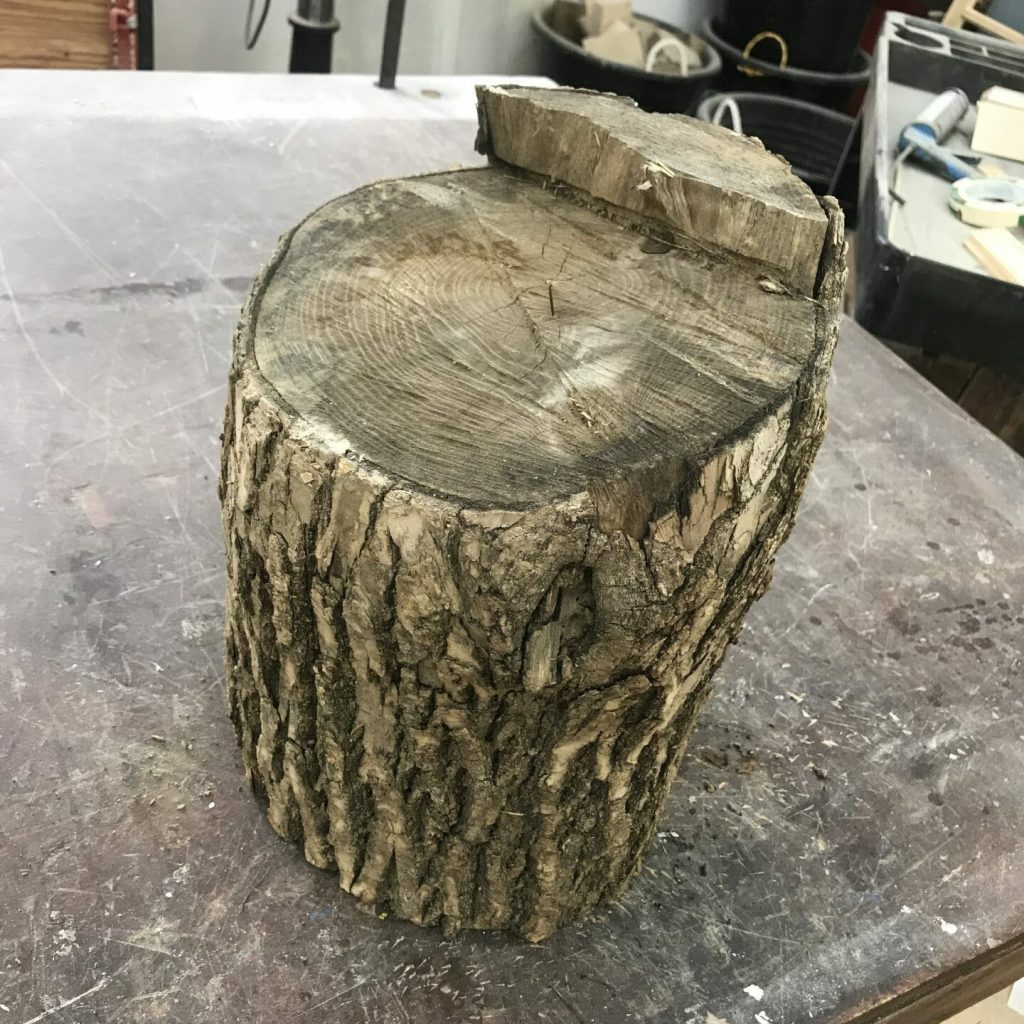
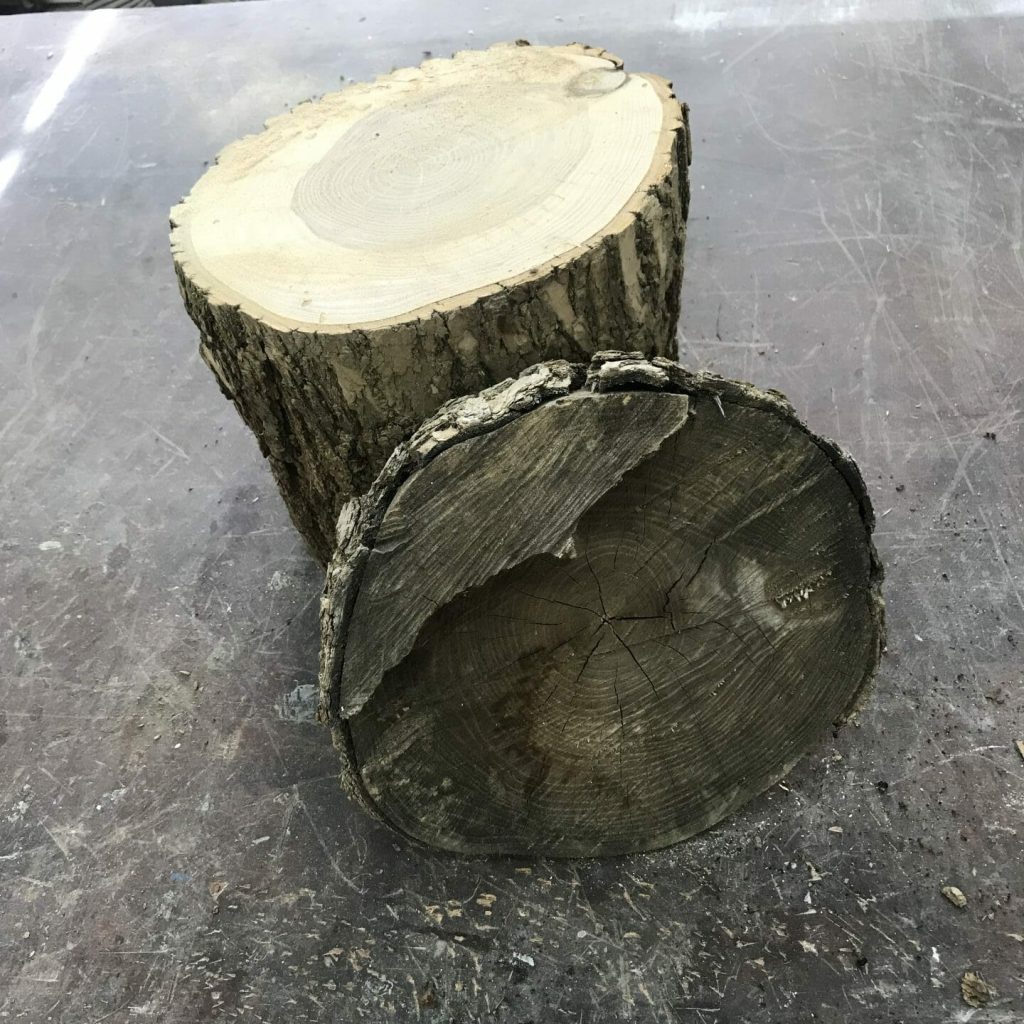
Bore Away
Once your log is sliced to the proper length, it’s time to start drilling.
First, use a marker to draw a rough outline of the shape you want to bore out of the log. As you can see, I left an inch or more so my planter would have nice thick sides.

Next, bore a series of holes with your forstner bit on the inside of the shape you’ve drawn. Make them as close together as possible. You may want to clamp your log to the drill press table to keep it steady. The holes I bored were about six inches deep.

Boring is boring, so after I’d completed about half the holes I needed I took a break and did some chiseling.

Then it was back to the boring boring…

Chisel Away
Once you’ve made as many holes as you can, it’s time to grab the hammer and chisel and clean out the inside of your planter.
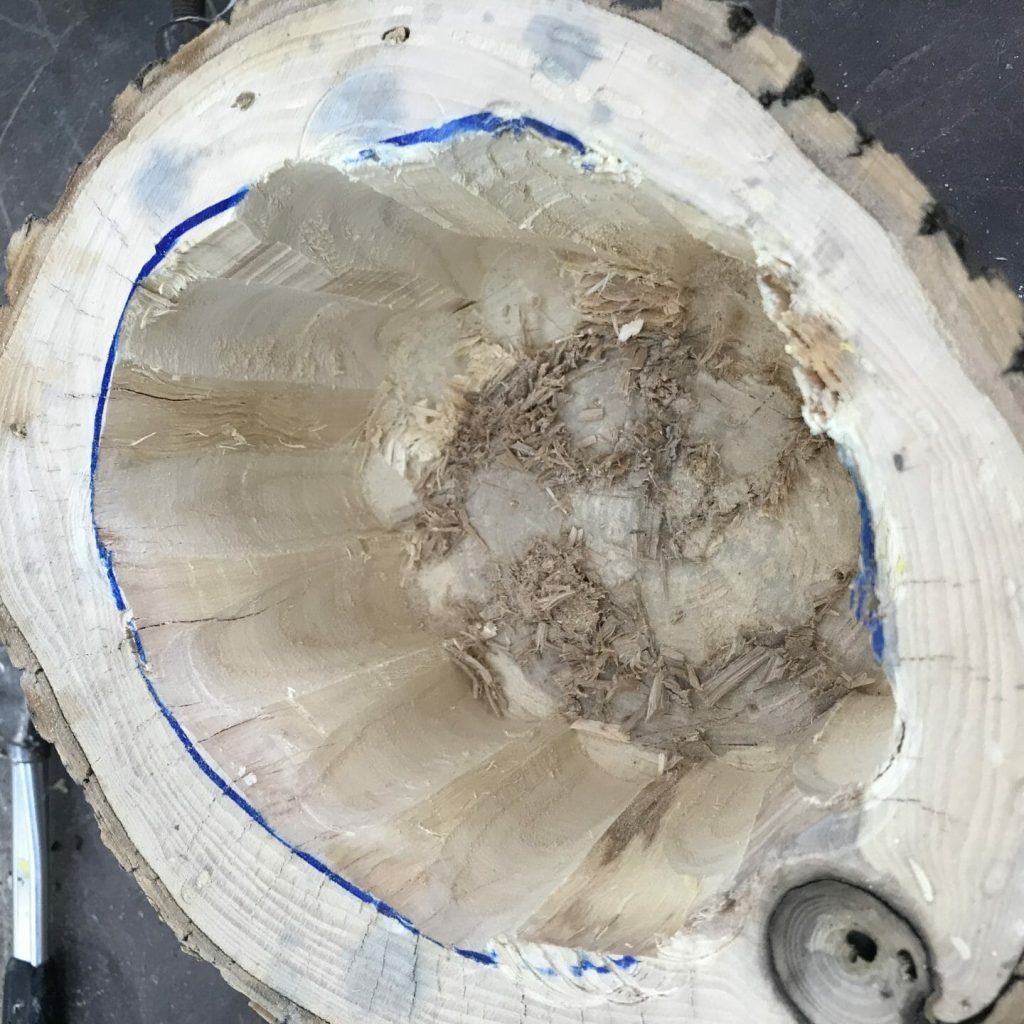
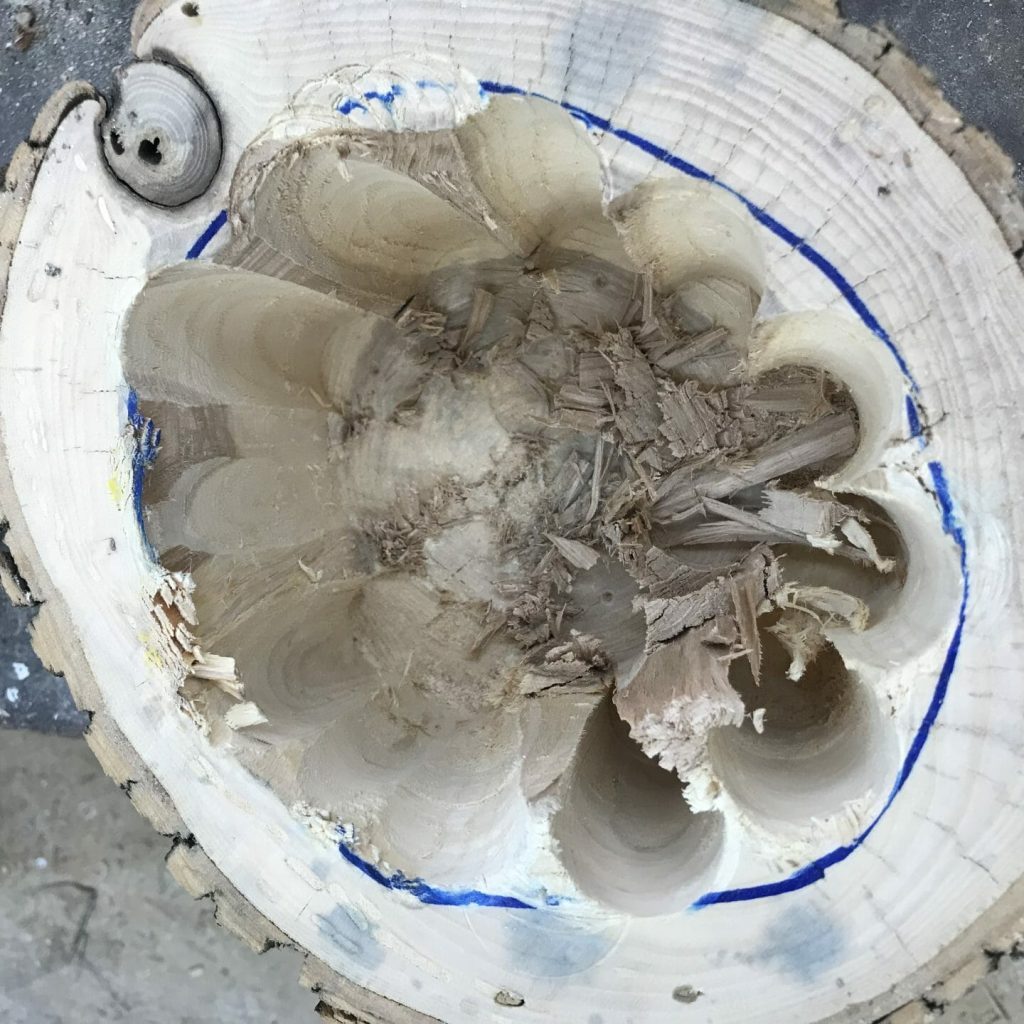
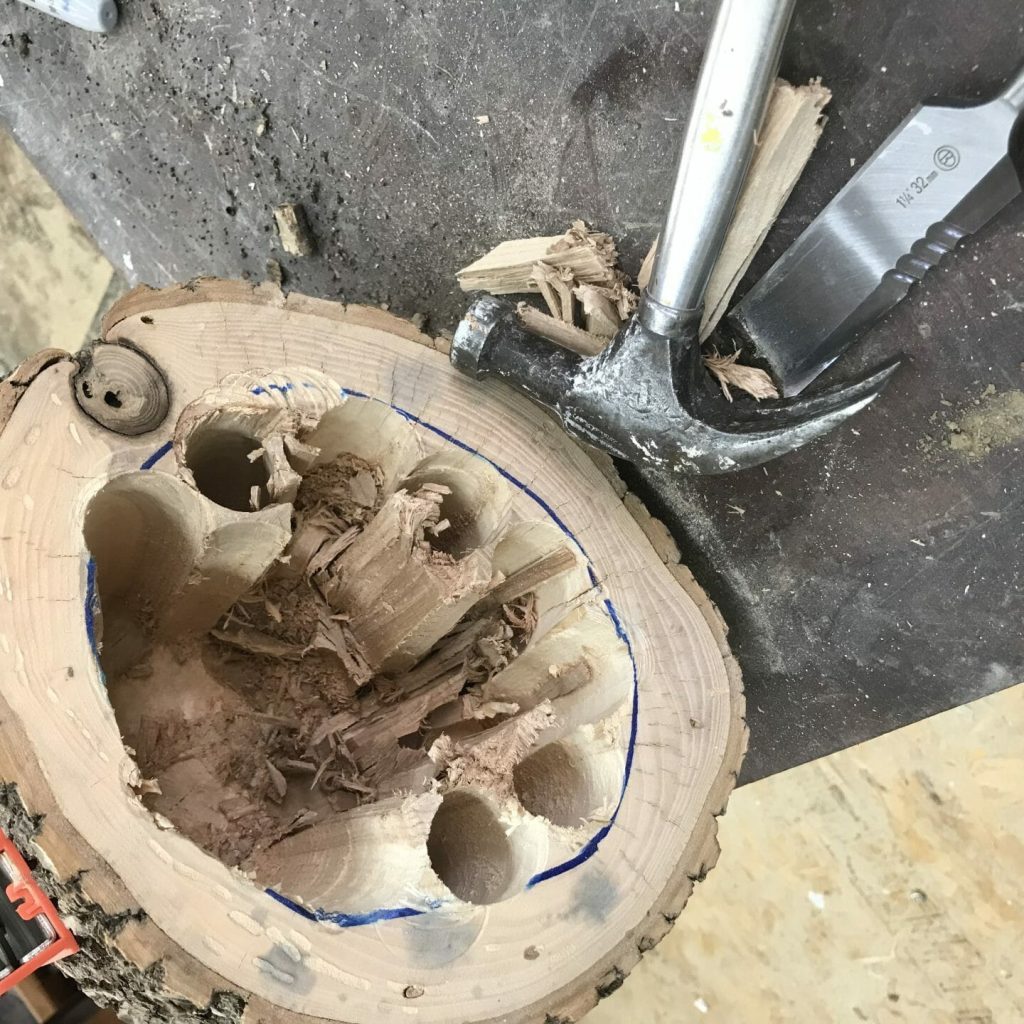
The bad news is there’s a chance you’ll hit your hand with the hammer at least once during this process. The good news is that the inside of your planter doesn’t have to be perfect since you’ll be filling it with dirt.
Finishing Touches
To finish off your planter flip it over and drill a couple drainage holes with the 1/2 inch bit.

Then sand the inner lip of the planter to remove your marker line and smooth it a bit.
I also added some feet cut from a 1 1/4 inch branch.

Add A Plant
Once all that’s done, it’s time to add a plant.
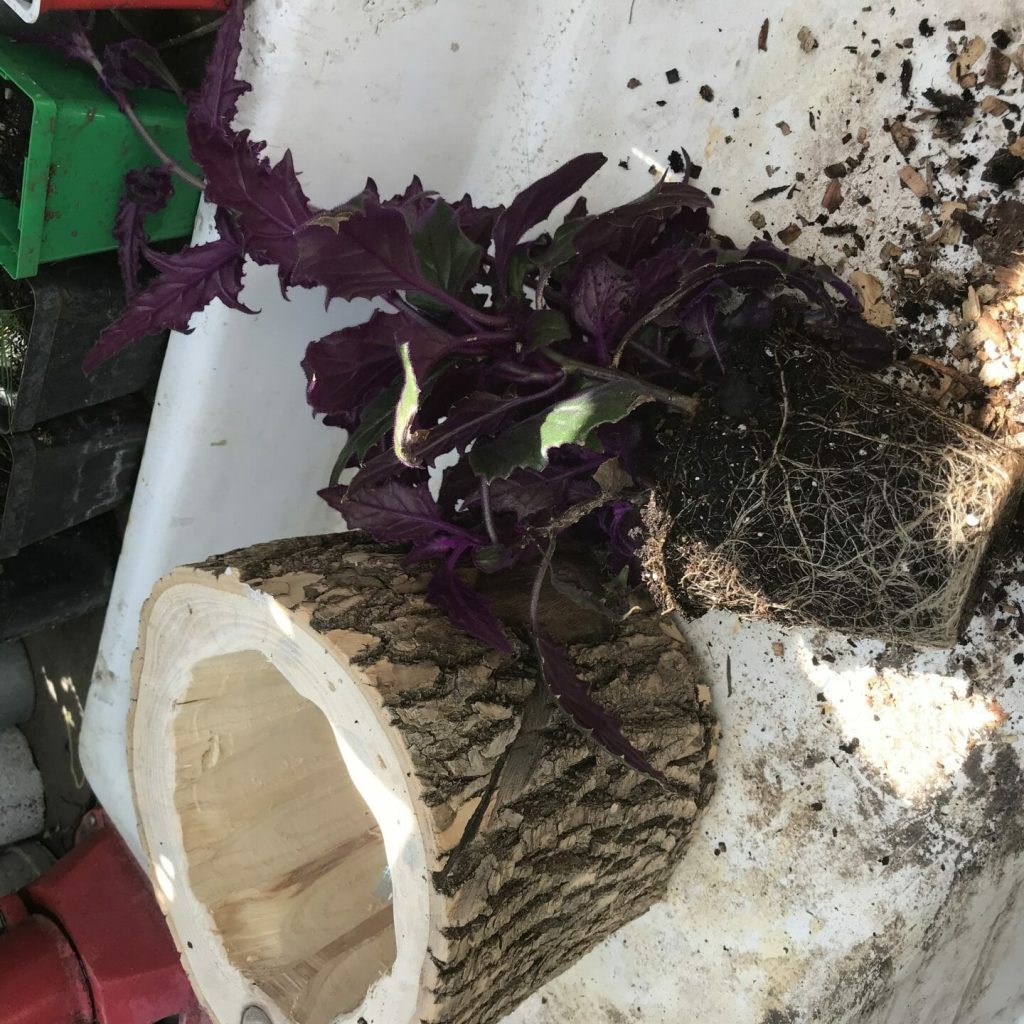

Conclusion
I’ve been making log-based planters for a few years now and really like the look of them both inside and outside the house. Here are some images of a few others:

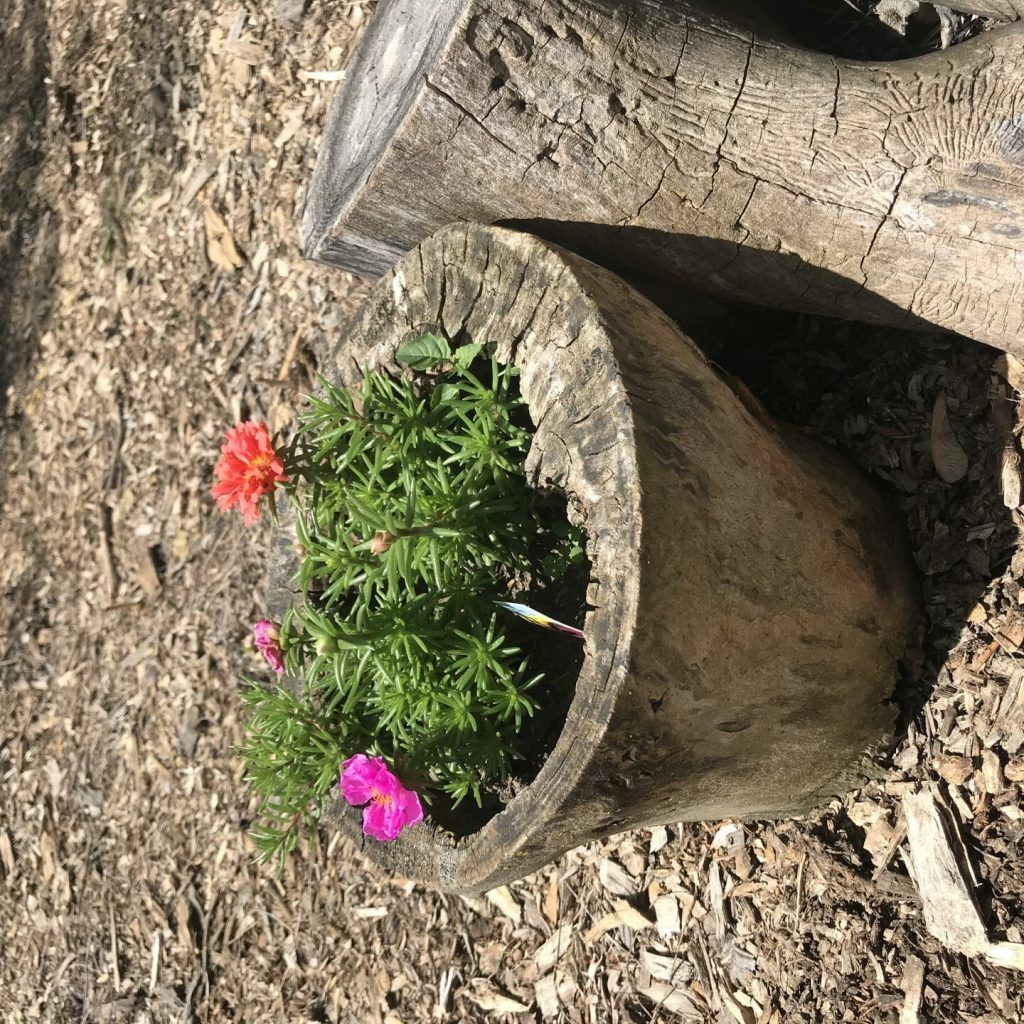
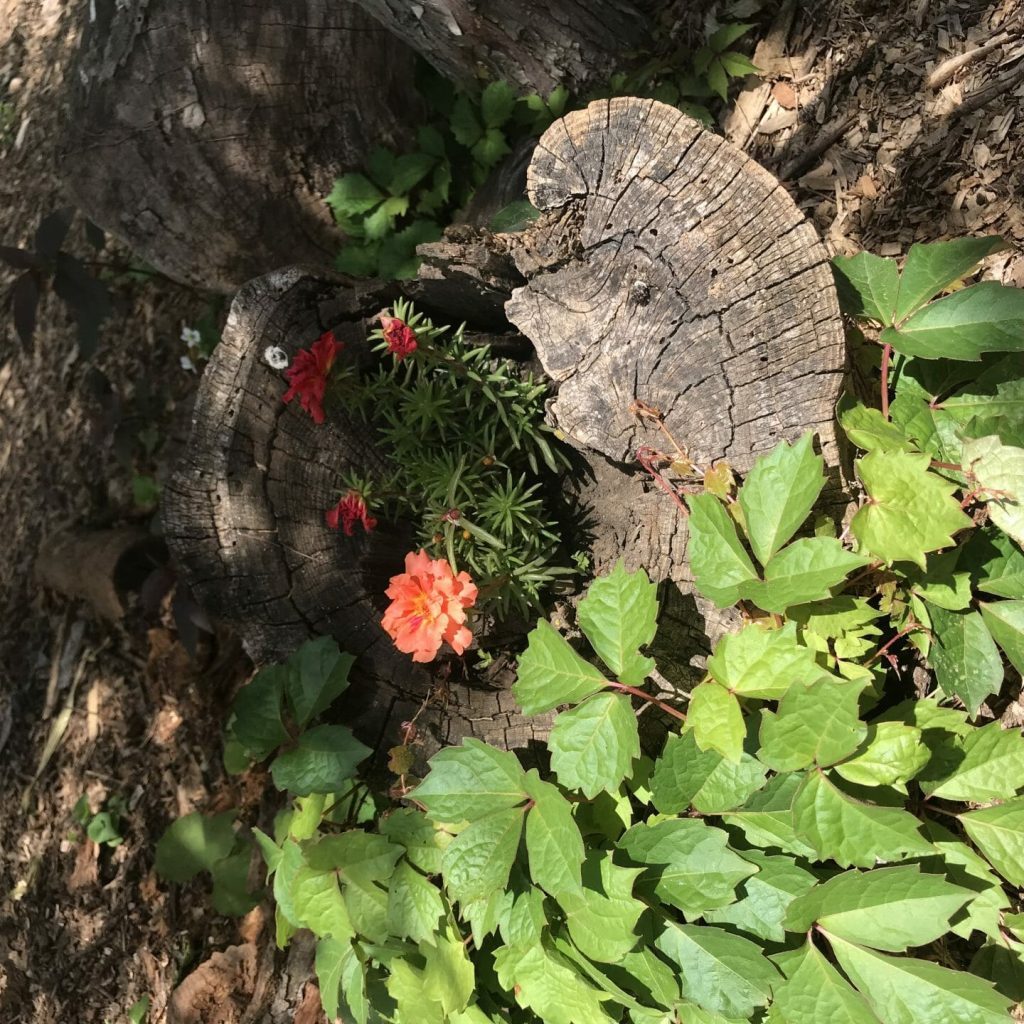
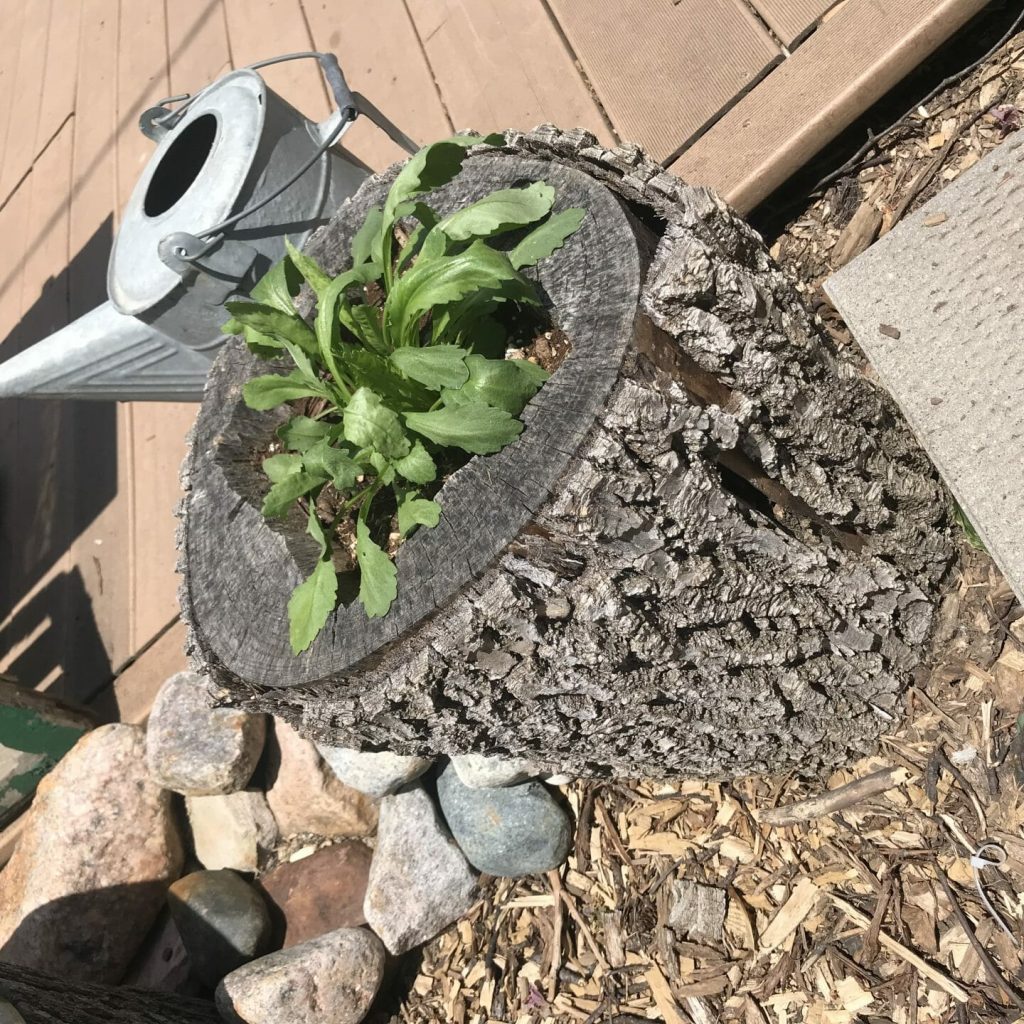
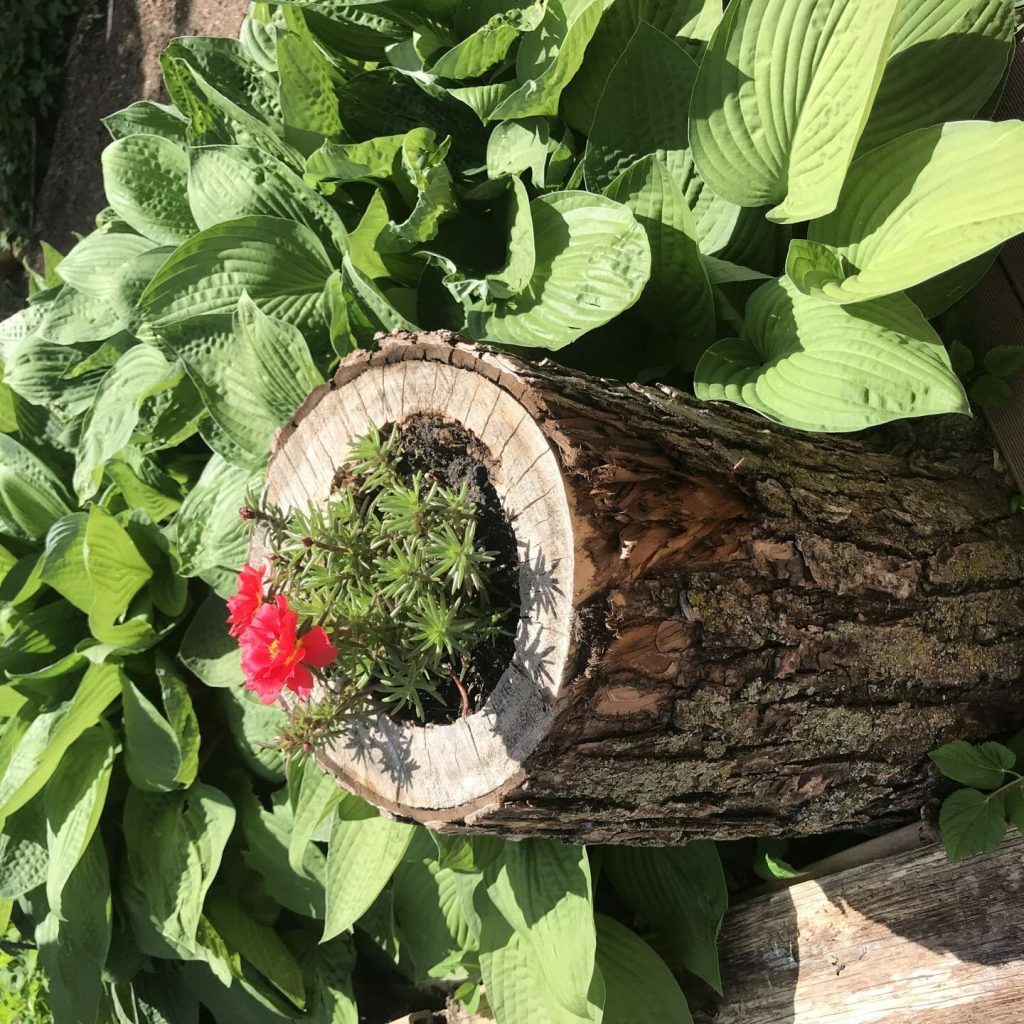
Pop any questions in the comments below and, if you DIY your own planter, I’d love to hear about it in the comments as well.
Contribute content to Playvolution HQ
Brought to you by Explorations Early Learning
Browse Trainings
Post Author
Jeff Johnson is an early learning trainer, podcaster, and author who founded Explorations Early Learning, Playvolution HQ, and Play Haven.



Leave a Reply